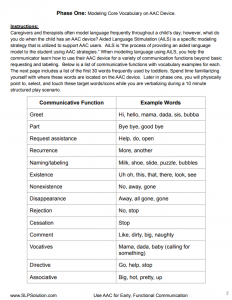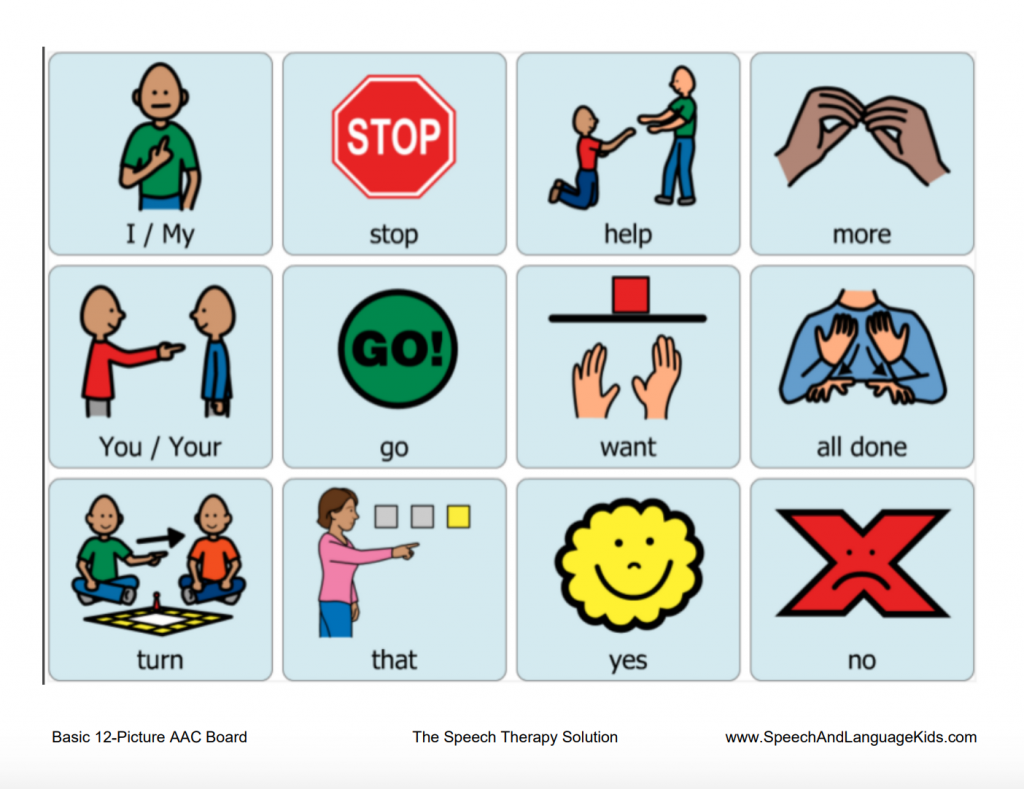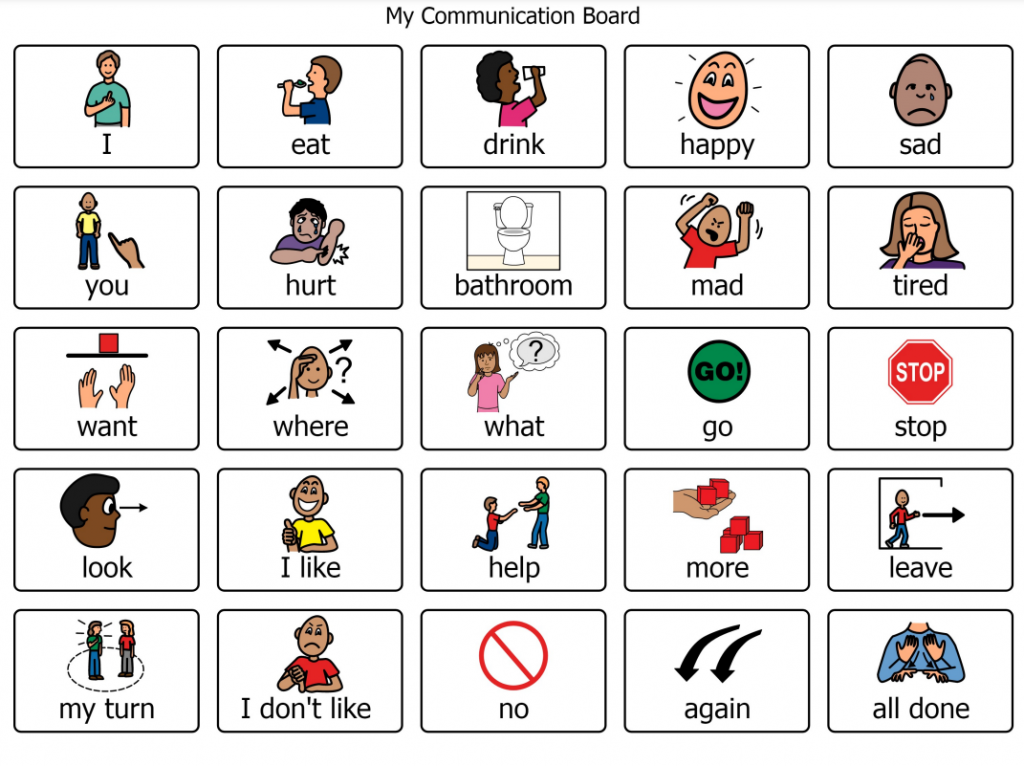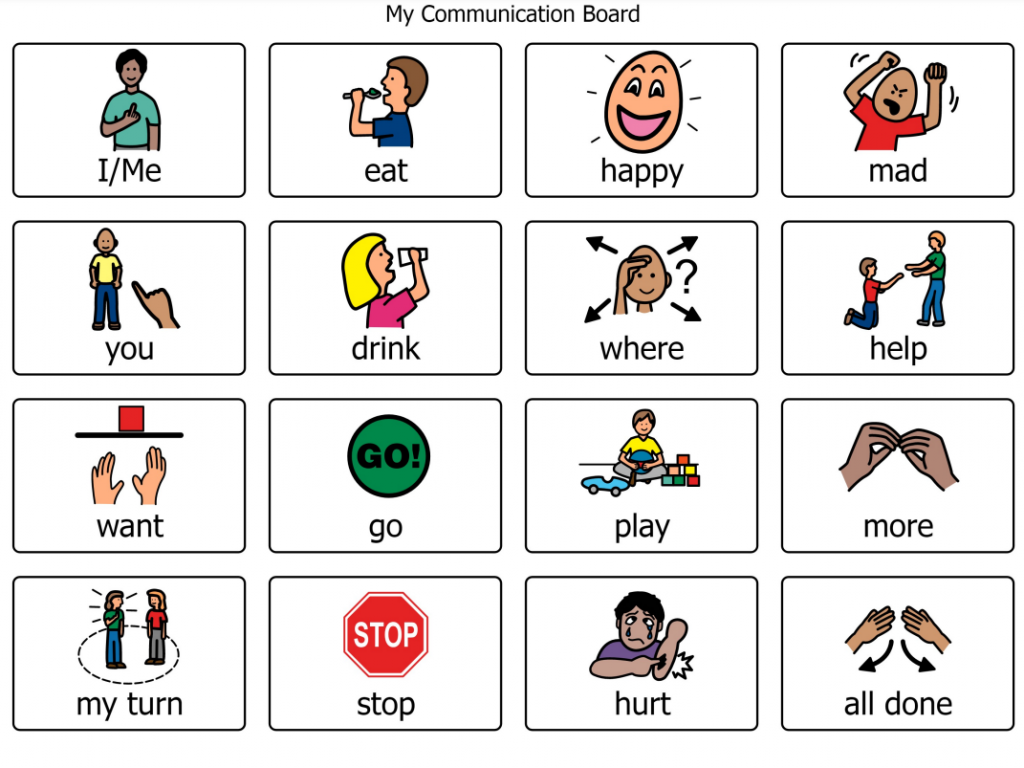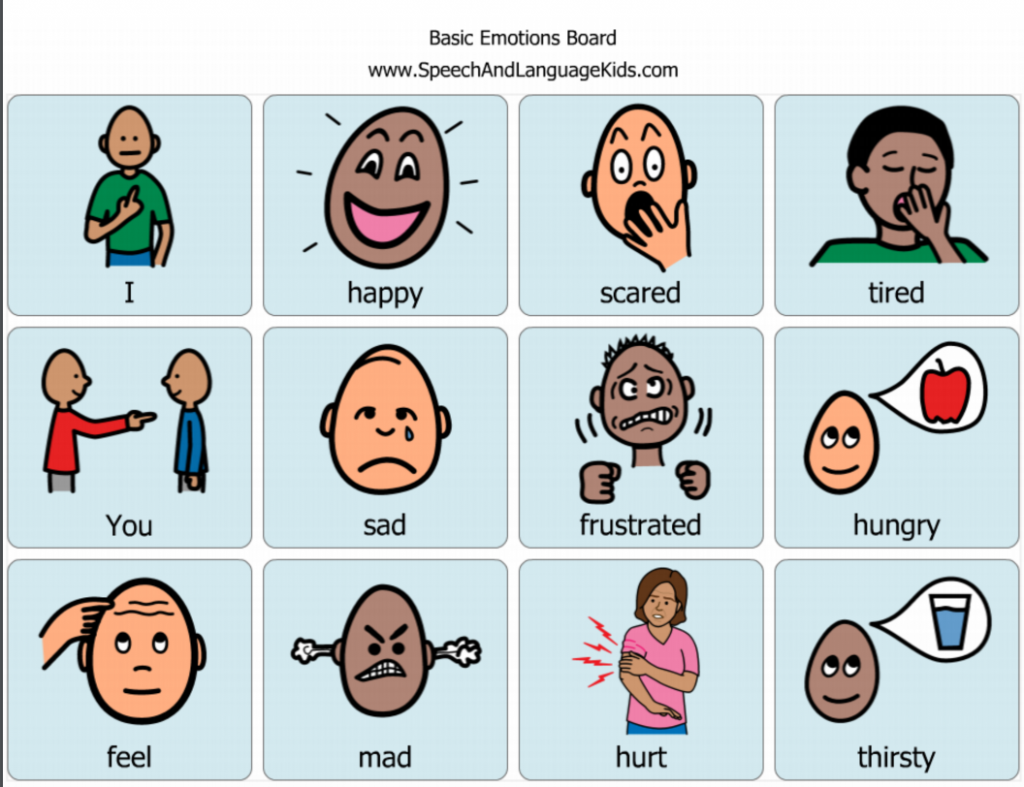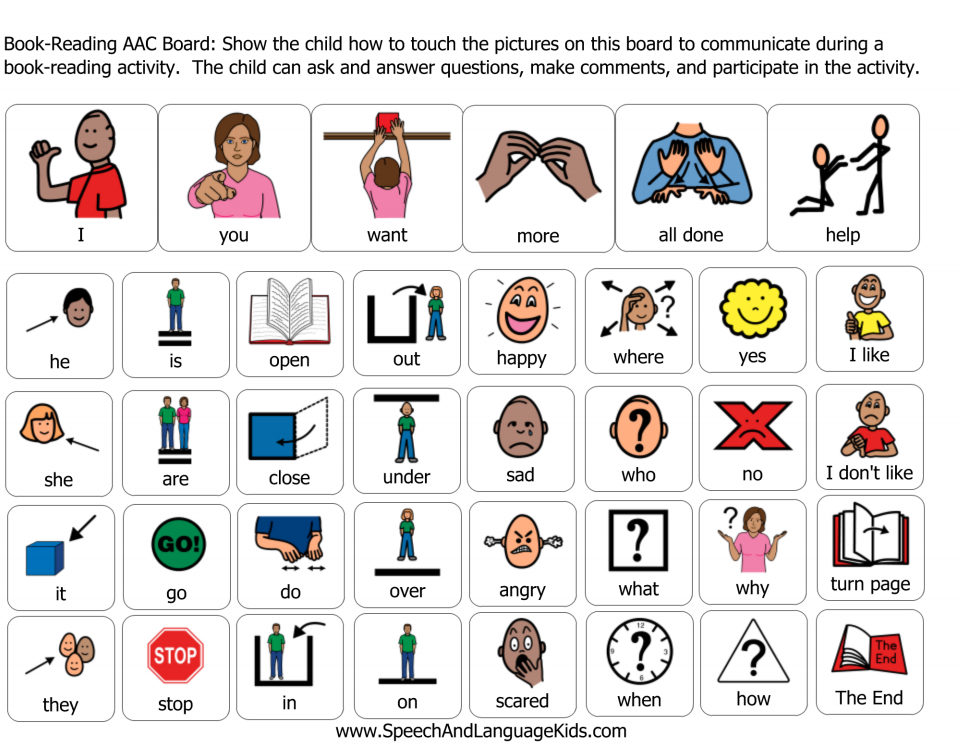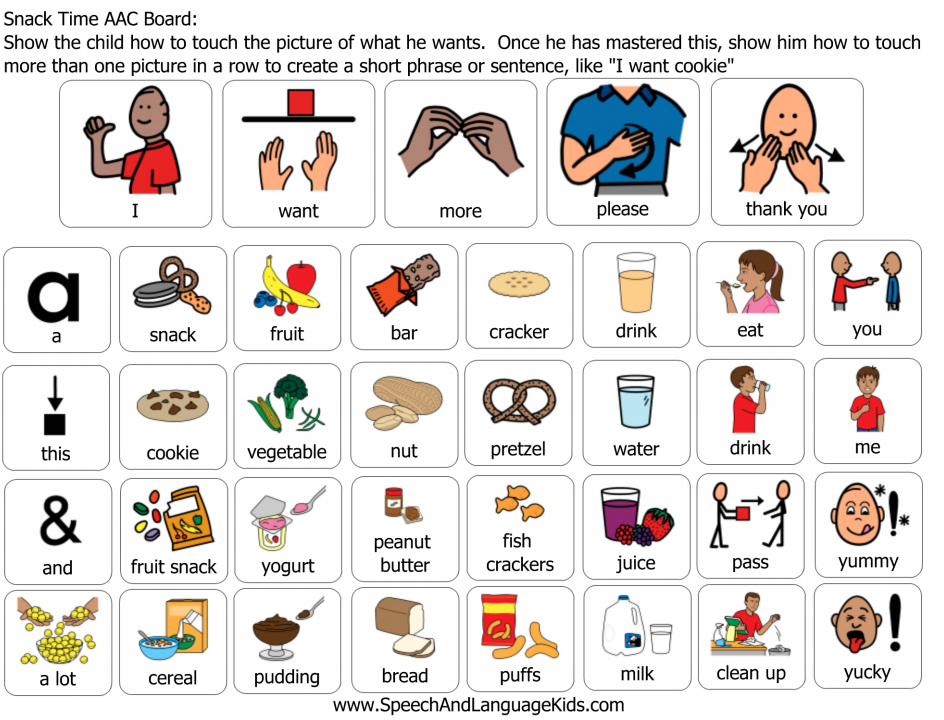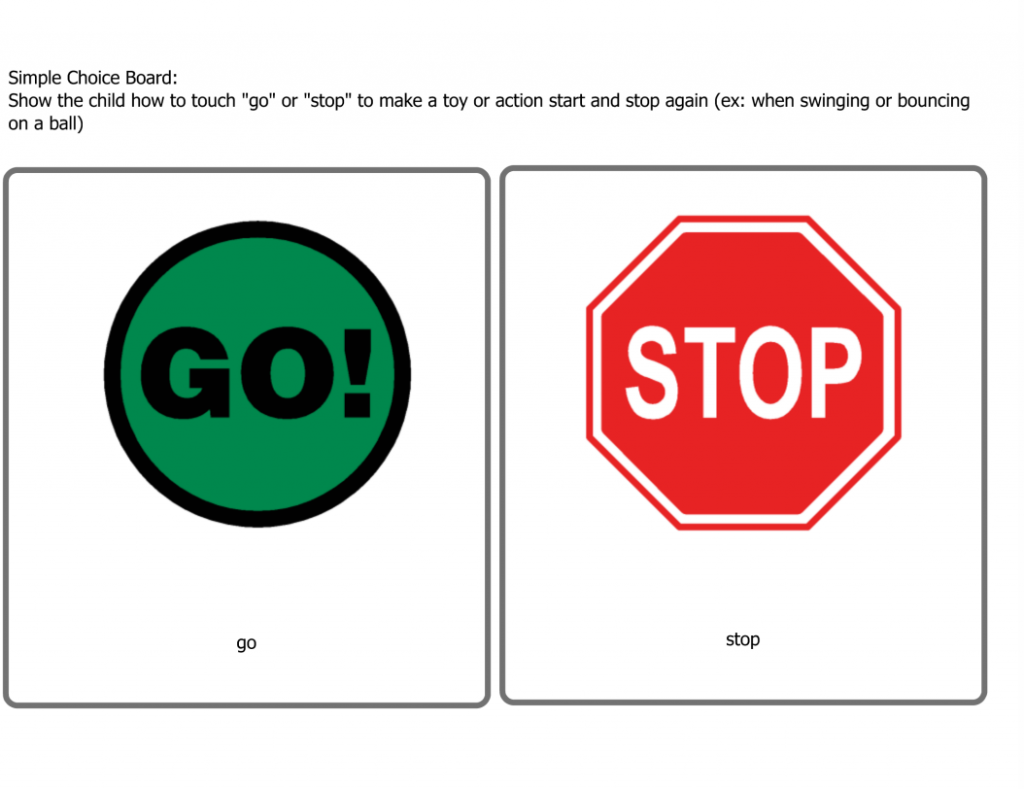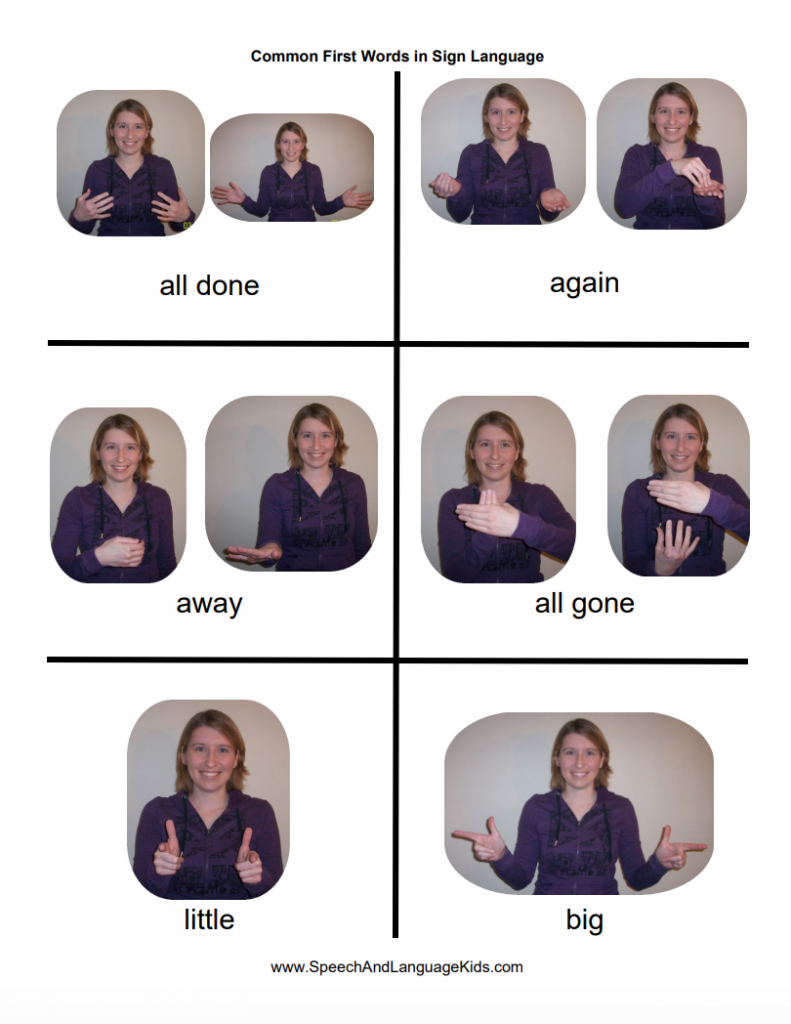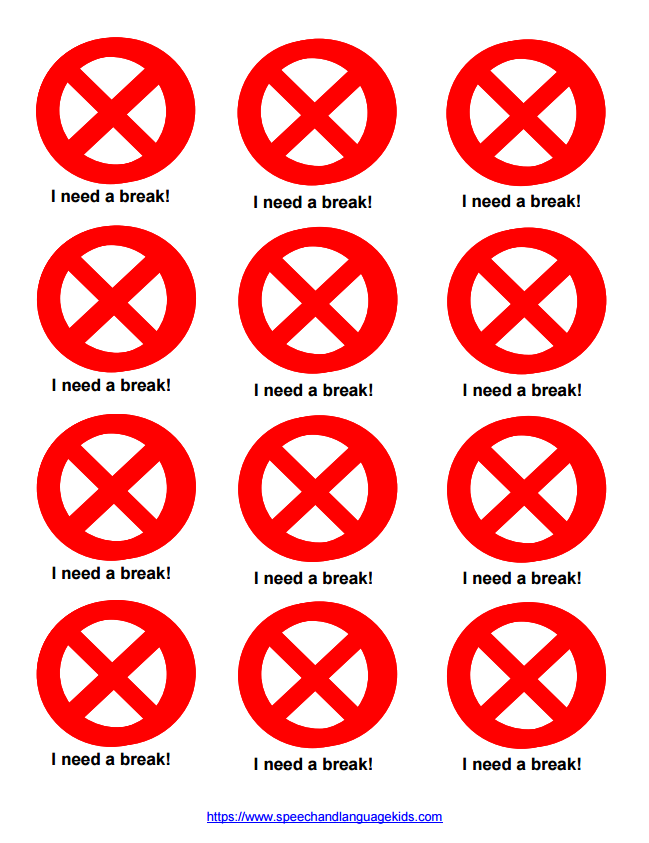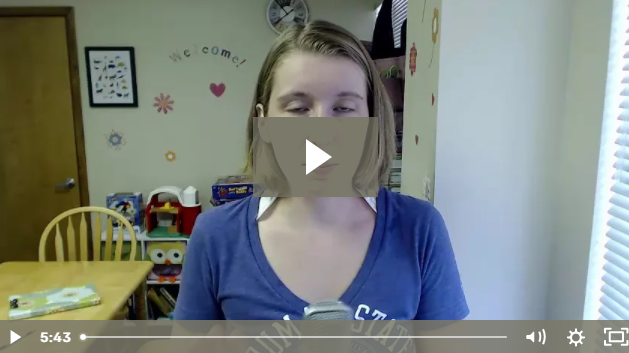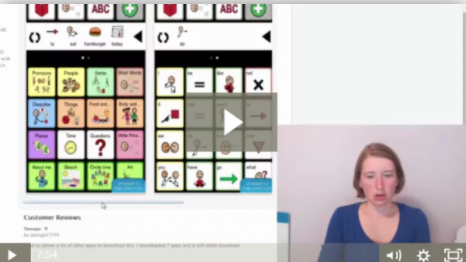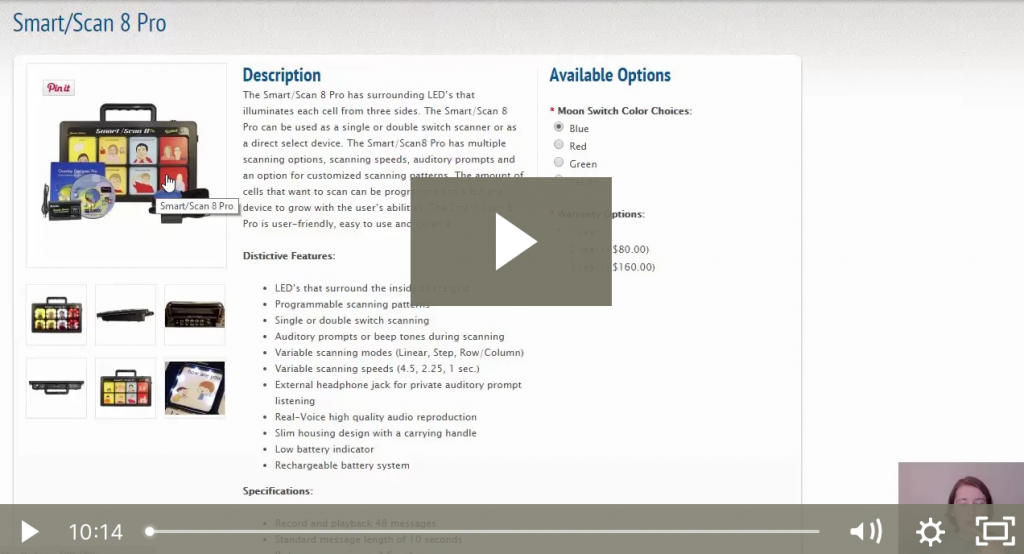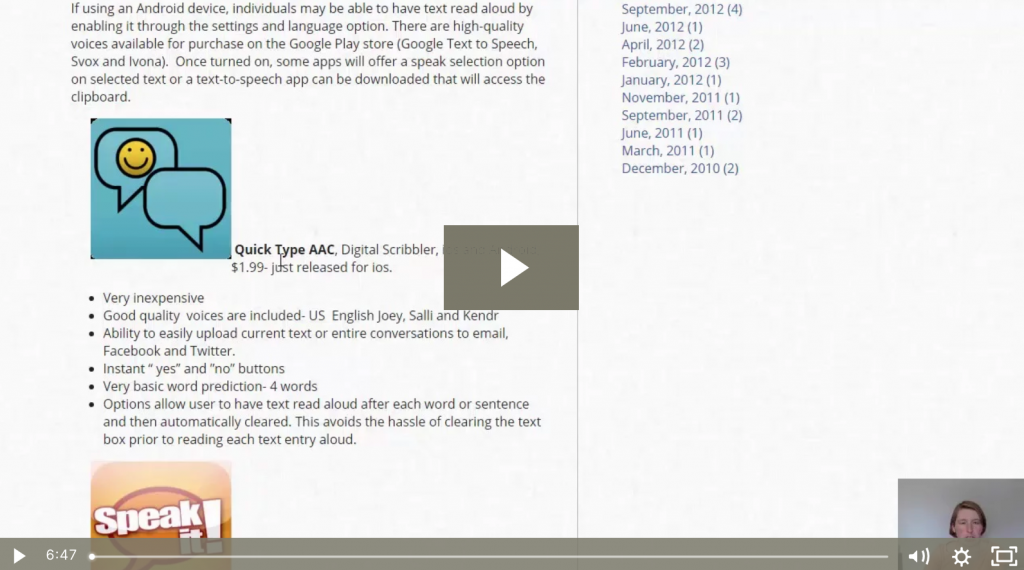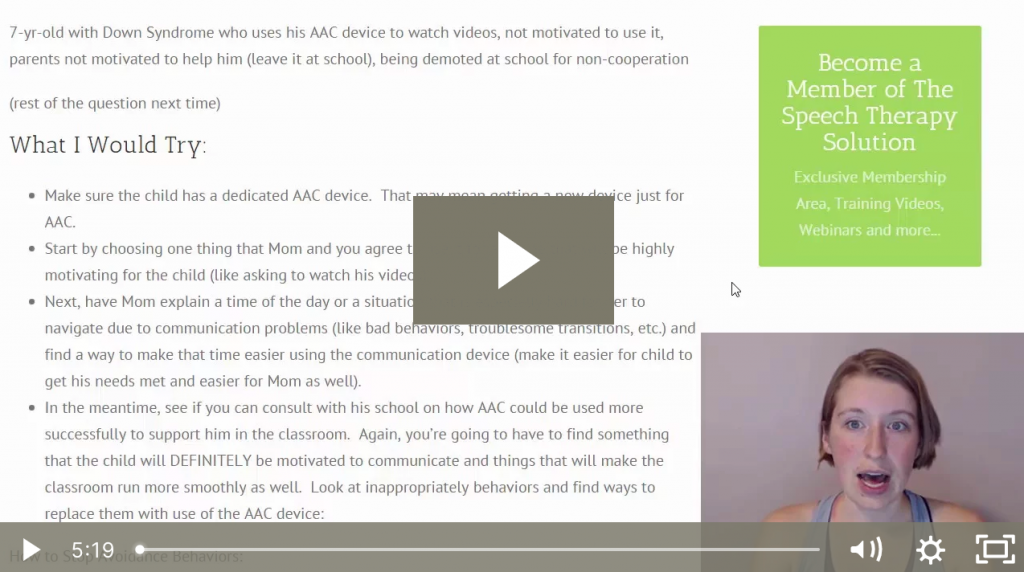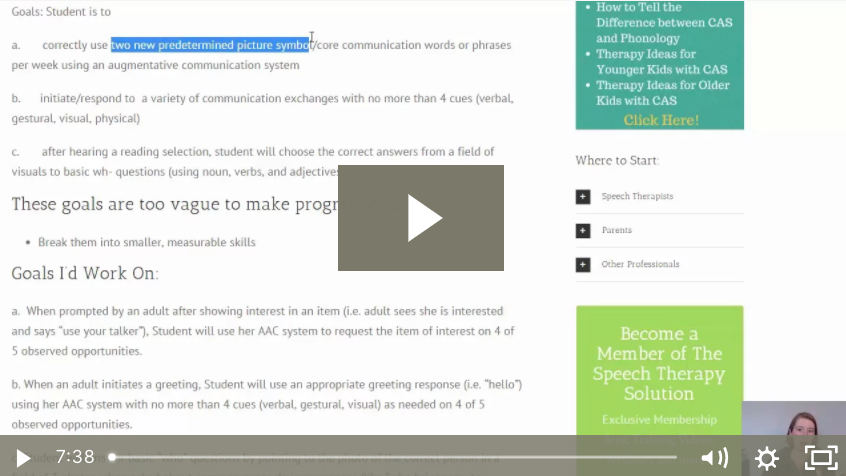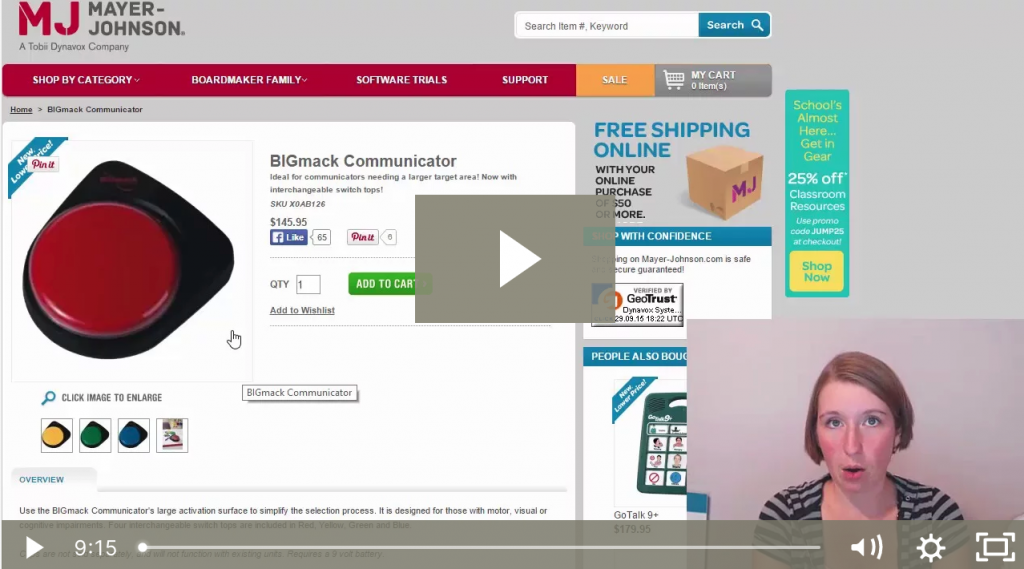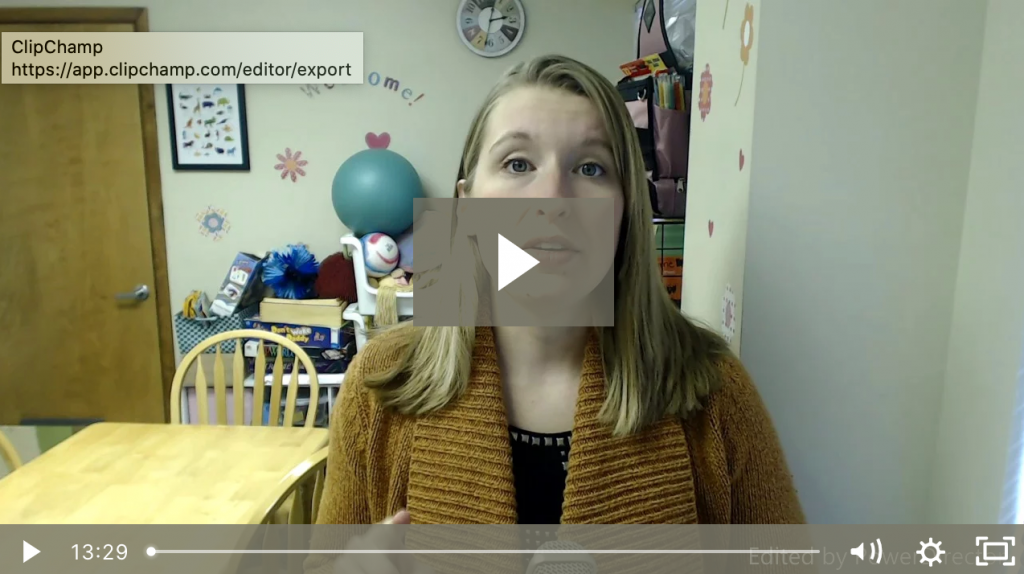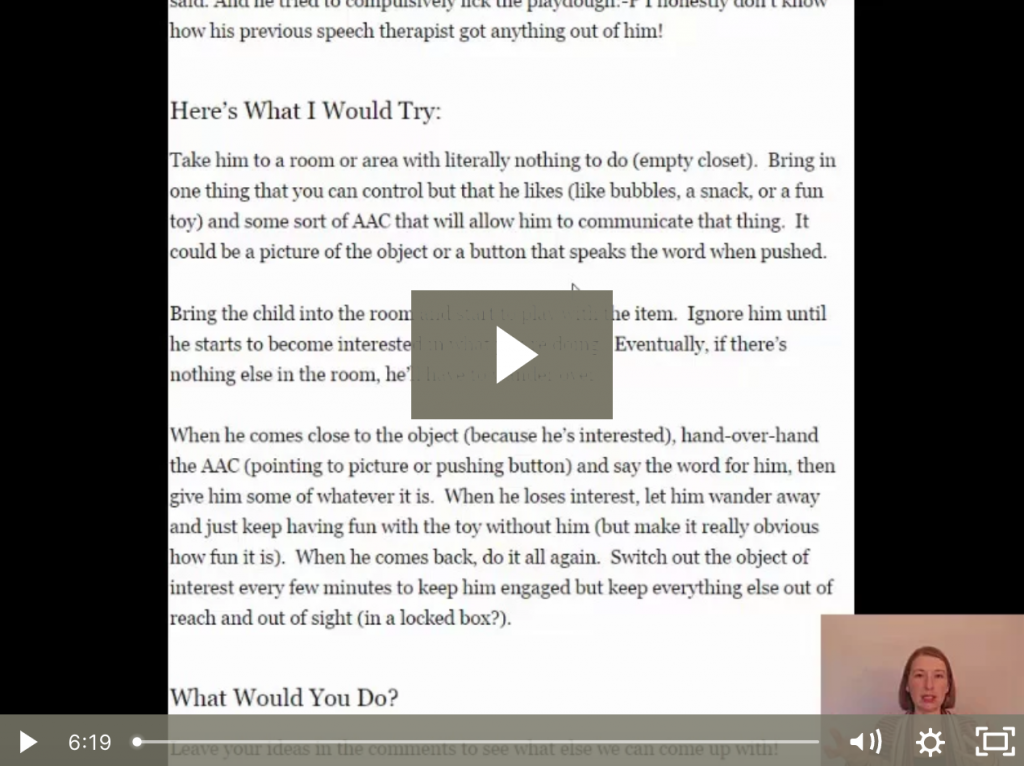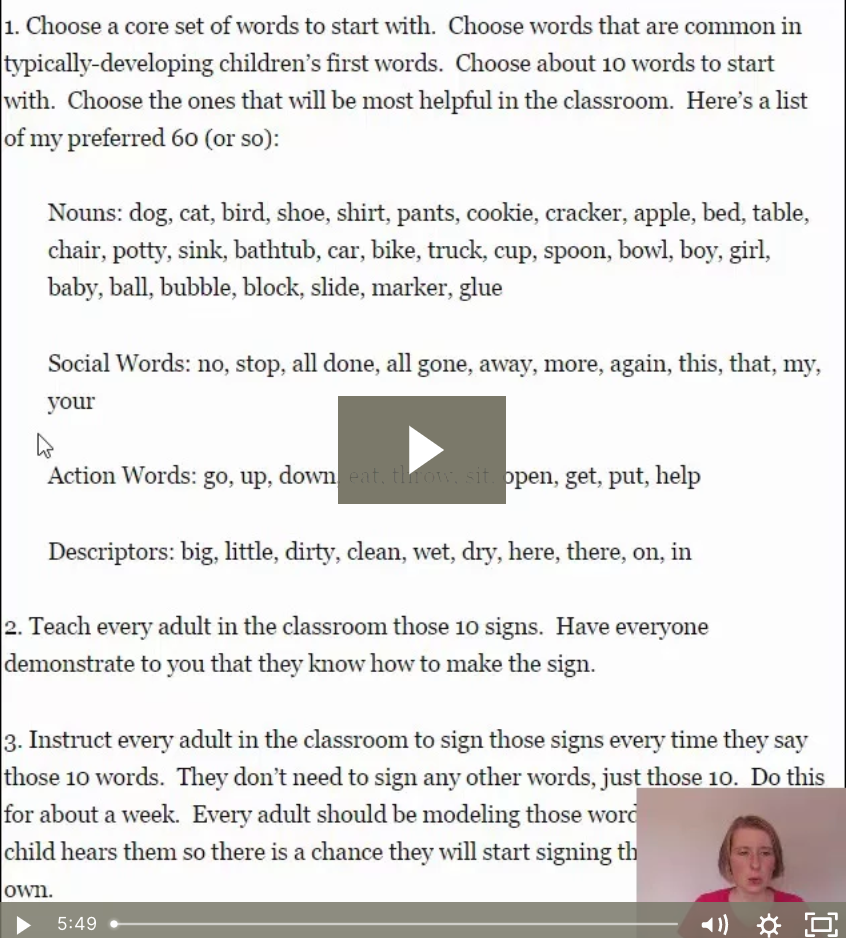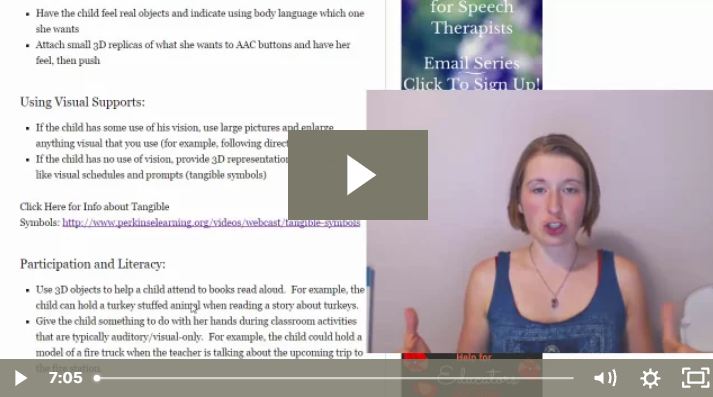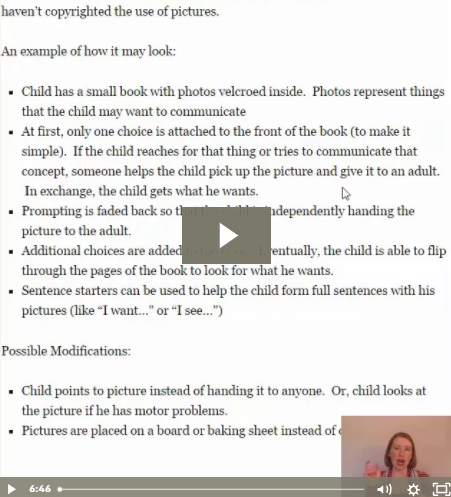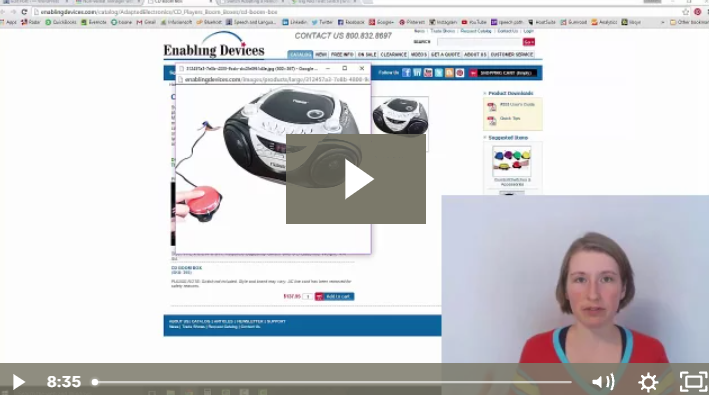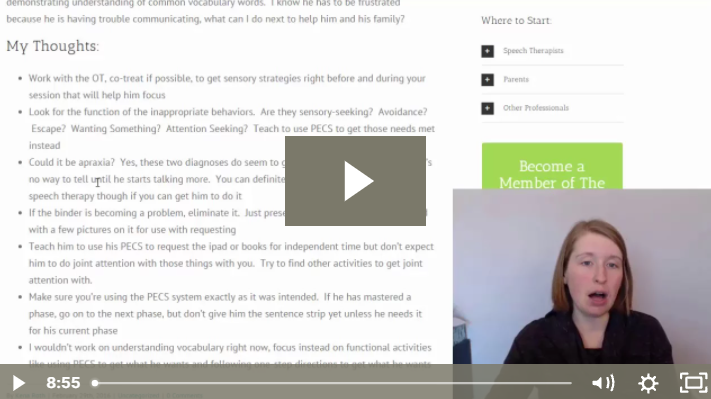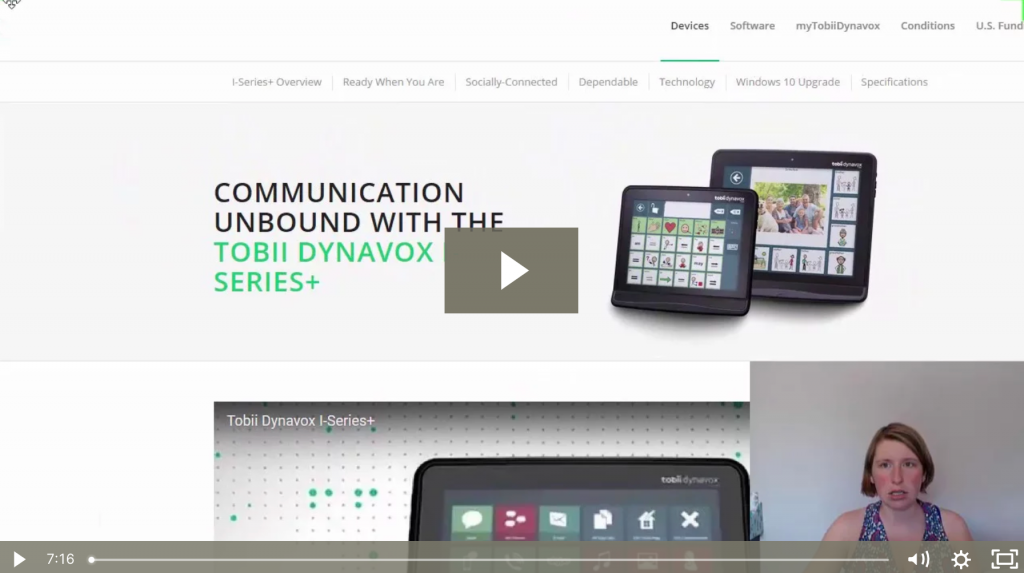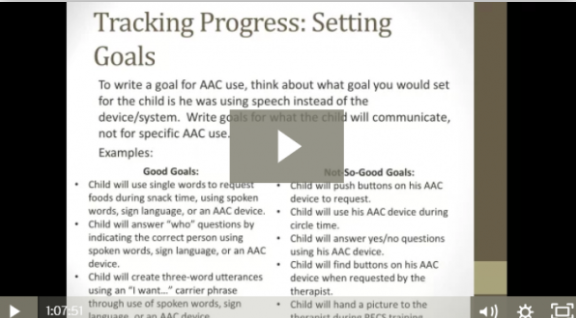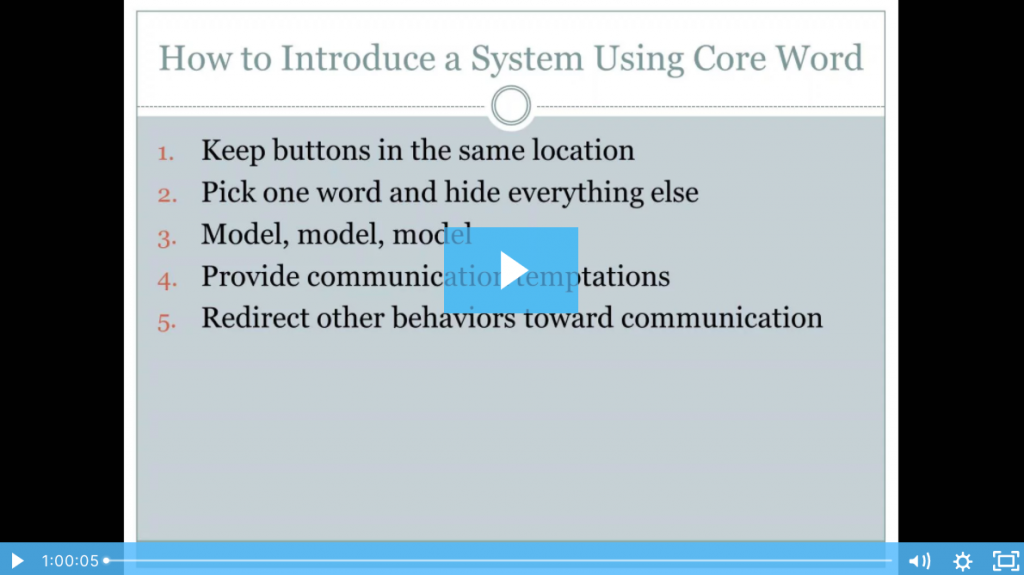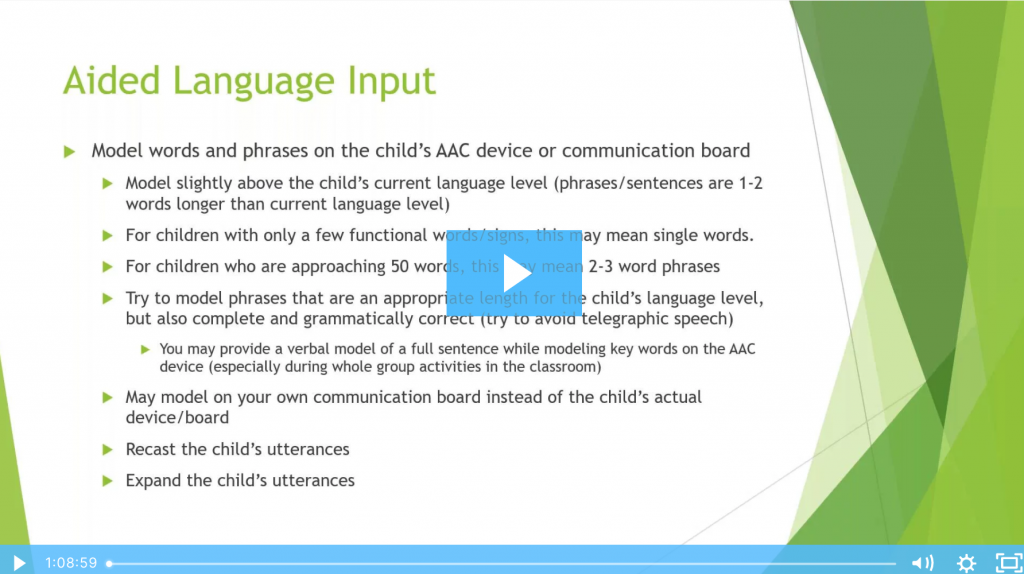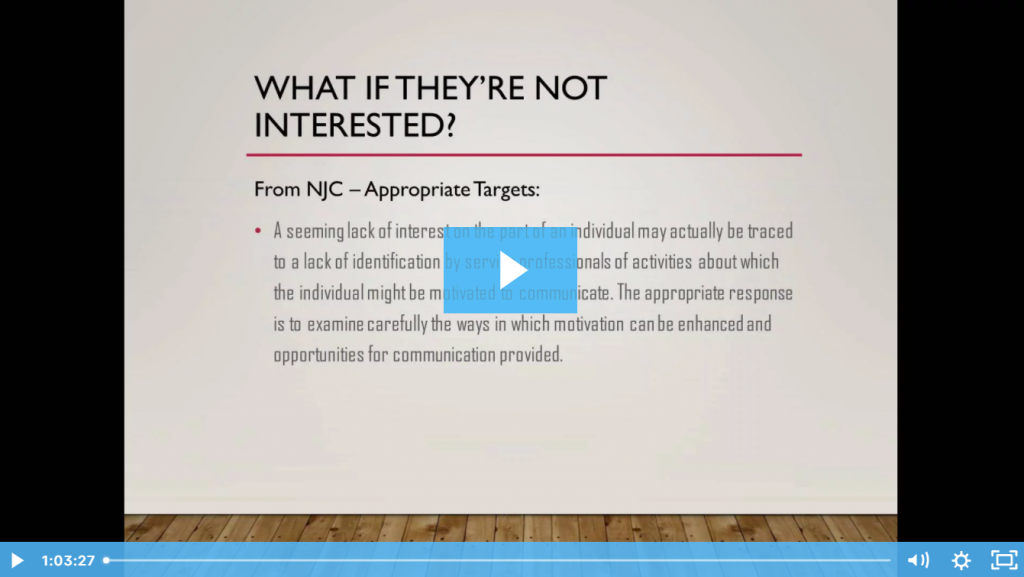Goal: Use AAC for Early, Functional Communication
Augmentative and Alternative Communication (AAC) is how we help children to communicate who aren’t able to use their speech mechanisms as well as they need to. There are a wide range of types of AAC, including sign language, picture boards/systems, low tech devices, and high tech devices. There is no one-size-fits-all solution for using AAC so we must use dynamic assessment and continued analysis of systems that we try to make sure that we find a good fit for each child.
The purpose of using AAC with a child is to help that child communicate functionally in his/her environment. The end goal should not be for the child to have mastered his/her device, but rather to be able to communicate with it. Therefore, all of our suggested therapy goals are communication goals. Here are some goals that may be helpful for children who are AAC users.
Sample Goal:
During 10-minutes of interaction with the therapist (who is modeling AAC use), Client will spontaneously use the AAC device to communicate a want, need, or idea at least ___ times. <You should include the number of times that you think this child will be able to communicate spontaneously after the specified amount of therapy>
Download the No-Prep Therapy Kit:
We have a start-to-finish therapy kit that will give you everything you need to practice this skill in therapy and send home homework. Click the packet below to open it. Then, print it out and place it in the child’s notebook or binder.
Therapy Phases:
- Client will participate in at least 10 minutes of play/conversation with a therapist or parent/caregiver who is modeling core vocabulary on AAC device.
- When prompted, client will imitate core vocabulary words on AAC device on 8 out of 10 opportunities.
- Client will spontaneously use device to communicate wants, needs, and ideas at least __ times during 10 minutes of interaction.
Supplemental Materials
Here are some other resources that may help you when working on this skill:
Here is a list of options for AAC devices, methods, and systems that you may want to consider.
This simple board has 12 common word choices that you can print out and use during a therapy activity. Just have the child point to the word he/she wants to communicate.
This AAC board will give more options for a client to communicate basic wants and needs.
One last board for communicating wants and needs. This one is a nice in between of the previous two.
This simple 12-picture AAC board will help a child talk about emotions.
Book-Reading Activity AAC Board
A basic AAC board that can be used to help a child communicate during a book-reading activity or story time. Great for circle time in a classroom. This is not intended to be a long-term AAC solution, but rather a test board that you can use to help a child begin to communicate using pictures. Or, use this board to see if a child is ready to move up to an AAC system with more choices or pictures.
Here is a slightly more complex AAC board that can be used at snack time. Pull out some snacks during your speech therapy session or send it home with parents (with a little training) to allow a child to use AAC to communicate during snack time.
“Go/Stop” 2-Button AAC Choice Board
This simple AAC board just has two choices: stop and go. This is great for helping a child who is just starting to understand how to communicate using pictures.
Common First Words in Sign Language
Using sign language in children who are not yet speaking has been studied thoroughly and the research shows that using sign language will not prevent a child from speaking or slow him down in terms of spoken speech. In many cases, using sign language (or other forms of alternative communication) has actually been shown to help children start talking more quickly.
Break Cards and How to Use Them
Easy-to-implement AAC for a child whose challenging behaviors are motivated by escape or avoidance.
Training Videos:
Need some extra help on treating this skill? Check out these related training videos:
Webinar Recordings:
If you need some in-depth information related to this skill, check out our related webinar recording(s):

